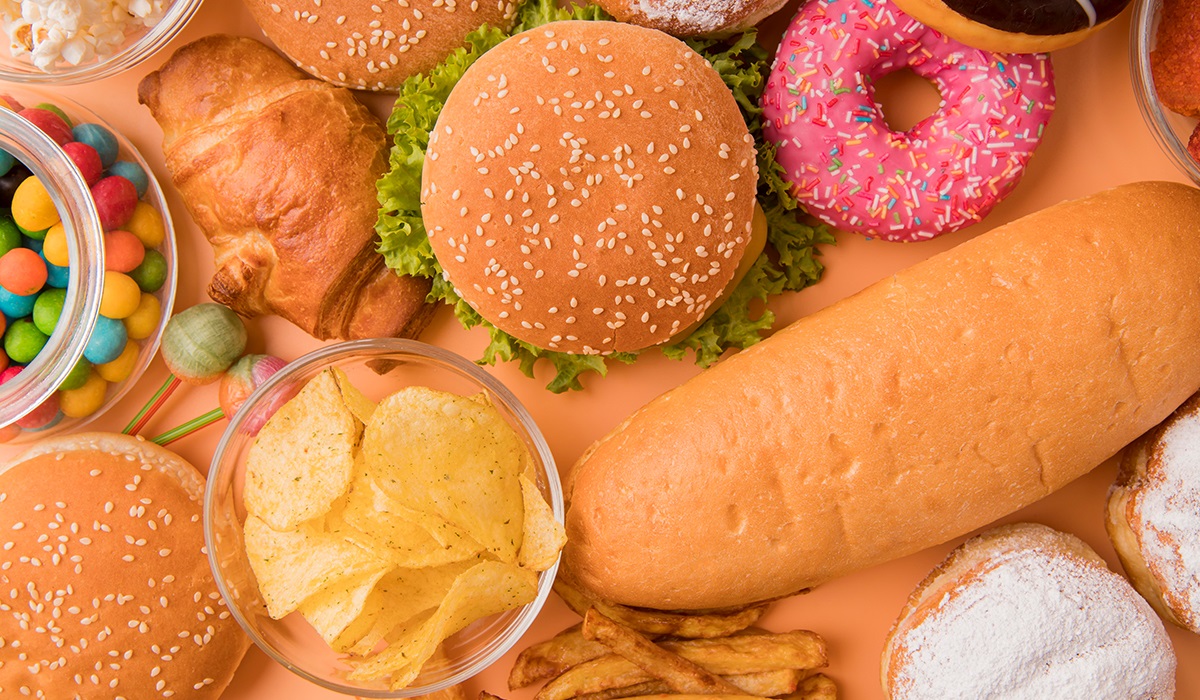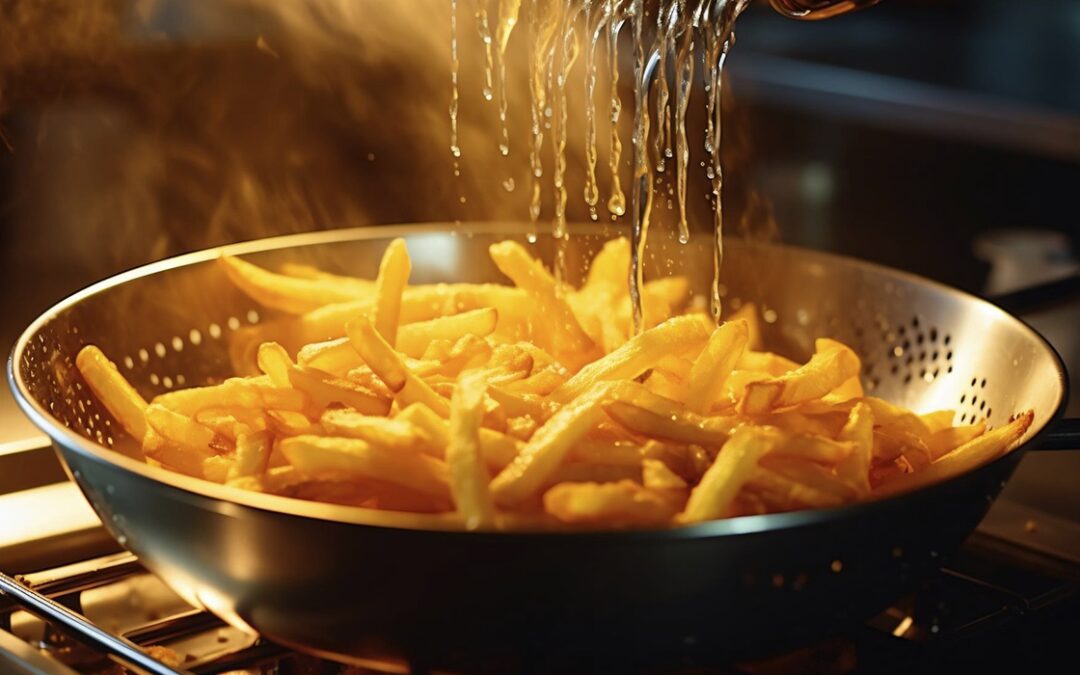People are concerned about nutritious foods as a typical first line of healthiness, but knowing what to accept or reject in their diet is important, so we’re trying to better understand some crucial facts concerning fatty acid profiling, which is part of our daily diet. According to reports, the intake of industrially produced trans-fat-containing foods causes more than 0.2 million fatalities worldwide each year. According to the World Health Organization’s (WHO) guidance for adults, trans fat intake should be limited to less than 1% of total caloric intake, or less than 2.2 g per day for a 2000-calorie diet.
What is trans fatty acid?
Trans-fatty acids (TFAs) are unsaturated fatty acids derived from either natural or artificial sources. TFAs can be found naturally in meat and dairy products from ruminant animals. They arise naturally during bacterial digestion in these animals’ stomachs. However, when consumed in moderation, they are not dangerous. However, industrial trans fats are harmful to one’s health. They are made artificially by partially hydrogenating vegetable oils, which results in solid fats with a prolonged shelf life. These synthetic trans fats raise the risk of heart disease by elevating LDL (bad) cholesterol while decreasing HDL (good) cholesterol. It’s critical to keep their consumption to less than 1% of their total energy intake.

Why not use deep-frying oil many times during cooking?
Reusing deep-frying oil increases health concerns and lowers food quality. Oil degrades with each usage, forming hazardous chemicals such as trans fats and free radicals, which have been related to cardiovascular problems and oxidative stress. Additionally, frequent frying introduces food particles and moisture, which promotes bacterial growth and accelerates oil rancidity. This not only alters the taste and texture of following fried items, but it also raises the risk of gastrointestinal problems. Regular oil changes make dishes safer and tastier by reducing the accumulation of dangerous elements and ensuring optimal frying conditions for superior culinary results. In this connection, the FSSAI has also issued recommendations (FSSAI, Guidance Note No.: 06/2018) that cooking oil should not be reused for frying. Furthermore, the FSSAI warns that the total polar compound limit should not exceed 25%, and anything above that amount is dangerous for human consumption.
Type of fatty acid
Fatty acids are essential components of lipids, playing crucial roles in various biological processes. there are different types of fatty acids

Saturated Fatty Acids:
These fatty acids’ hydrocarbon chains contain no double bonds between the carbon atoms. Examples include palmitic and stearic acids.
Polyunsaturated Fatty Acids (PUFA):
These fatty acids contain more than one double bond in their hydrocarbon chain. Omega-3 fatty acids (alpha-linolenic acid, EPA, and DHA) and omega-6 fatty acids (linoleic acid and arachidonic acid) are some examples
Monounsaturated Fatty Acids (MUFA):
These fatty acids contain one double bond in their hydrocarbon chain. Olive oil, for example, contains oleic acid
Essential Fatty Acids:
These fatty acids refer to polyunsaturated fatty acids (PUFA) which cannot be synthesised by the body and must be received through diet. Examples include linoleic acid (an omega-6) and alpha-linolenic acid (an omega-3).
Trans Fatty Acids:
These are unsaturated fatty acids with at least one trans double bond, rather than the more frequent cis structure. They can be found naturally in small amounts in various foods, although they are most commonly created during the hydrogenation of vegetable oils. Trans fatty acids are linked to negative health impacts.
Short-chain Fatty Acids (SCFA):
These fatty acids contain less than six carbon atoms. Examples are acetic acid, propionic acid, and butyric acid. They are largely created through bacterial fermentation in the gut and serve various physiological functions.
Medium-chain Fatty Acids (MCFA):
These fatty acids contain six to twelve carbon atoms. Examples include caprylic and capric acids. They are found in particular foods, such as coconut oil, and possess distinct metabolic features.
Long-chain Fatty Acids (LCFA):
These fatty acids contain over twelve carbon atoms. Examples include palmitic acid, stearic acid, oleic acid, linoleic acid, and arachidonic acid.

People should take trans fatty acids (TFAs) seriously for several reasons
Health Risks: Trans fats are significantly associated with an elevated risk of heart disease. They boost bad cholesterol (LDL) while lowering good cholesterol (HDL), which contributes to atherosclerosis, coronary heart disease, and stroke.
Widespread Use: TFAs are prevalent in processed foods, fast food, fried meals, and baked foods. The food sector prefers them because of their long shelf life and great temperature stability. Because of their widespread availability, trans fats are easily consumed unknowingly.
Regulatory Concerns: Many governments and regions have recognized the health dangers connected with trans fats and have implemented regulations to limit their usage in food products. This includes prohibitions or tight restrictions on trans fats in restaurants and packaged meals.
Alternatives Available: Olive oil, almonds, and avocados contain unsaturated fats, which are better alternatives to trans fats. Individuals can lower their intake of trans fats while improving their overall health by advocating these better options.
Global Health Impact: Trans fats have a deleterious impact on health across all geographies and populations. They affect people all around the world, increasing the prevalence of heart disease and other related disorders. Reducing trans-fat consumption can have a large positive influence on worldwide public health.
Thus we can understand the seriousness of trans fatty acids lies in health risks, their widespread use in processed foods, the regulatory efforts to limit their consumption, the availability of healthier alternatives, and their global health impact. By being aware of the risks and making informed dietary choices, individuals can protect their health and well-being.
Cultivator Phyto Lab Pvt. Ltd. specializes in fatty acid profiles for food and agricultural commodities, adhering to strict national and international requirements. With advanced technology and knowledge, we provide precise analyses and quick turnaround times (TAT), assuring compliance and delivering top-tier solutions tailored to our clients’ stringent standards and expectations.
Authors

Dr. Sanjoy Gupta (Ph.D)
Senior Officer- Training and Capacity Building
Dr. Sanjoy Gupta is a seasoned researcher with 13 years of experience across plant biotechnology, health science, nutrition, phytoplankton, and botanical studies. He has conducted research at reputed institutions like CSIR IIP, BSI, NIOT, and Cultivator Natural Products. With over a dozen published articles in national/international journals and thoughtful blog contributions, Dr. Gupta’s multidisciplinary expertise advances knowledge in holistic wellness and scientific innovation.

Sajid Hussain
Deputy Technical Manager (Food/Water/AYUSH/Cosmetic - Testing)
Sajid Hussain is a versatile analytical science expert with M.Sc. degrees in Food & Nutrition, Chemistry, and relevant diplomas. Boasting over 10 years of experience across diverse domains like food testing, pharmaceuticals, environmental studies, and more. A seasoned auditor for NABL, FSSAI, BIS, and ISO accreditations. Holds FSSAI Food Analytical certification and AYUSH approved chemist credential. Contributes research articles and blogs, showcasing technical proficiency. A distinguished figure in analytical science with a proven track record.
Reference :
- https://en.wikipedia.org/wiki/Trans_fat
- https://www.who.int/news-room/fact-sheets/detail/trans-fat
- https://www.sciencedirect.com/science/article/abs/pii/S1871402112000318?via%3Dihub
- https://fssai.gov.in/upload/uploadfiles/files/Guidance_Note_Used_Oil_12_11_2018.pdf
- https://fssai.gov.in/upload/uploadfiles/files/Guidance_Note_TransFat_03_03_2022.pdf
- Kaur N, Chugh V, Gupta AK. Essential fatty acids as functional components of foods- a review. J Food Sci Technol. 2014 Oct;51(10):2289-303. doi: 10.1007/s13197-012-0677-0. Epub 2012 Mar 21. PMID: 25328170; PMCID: PMC4190204.

